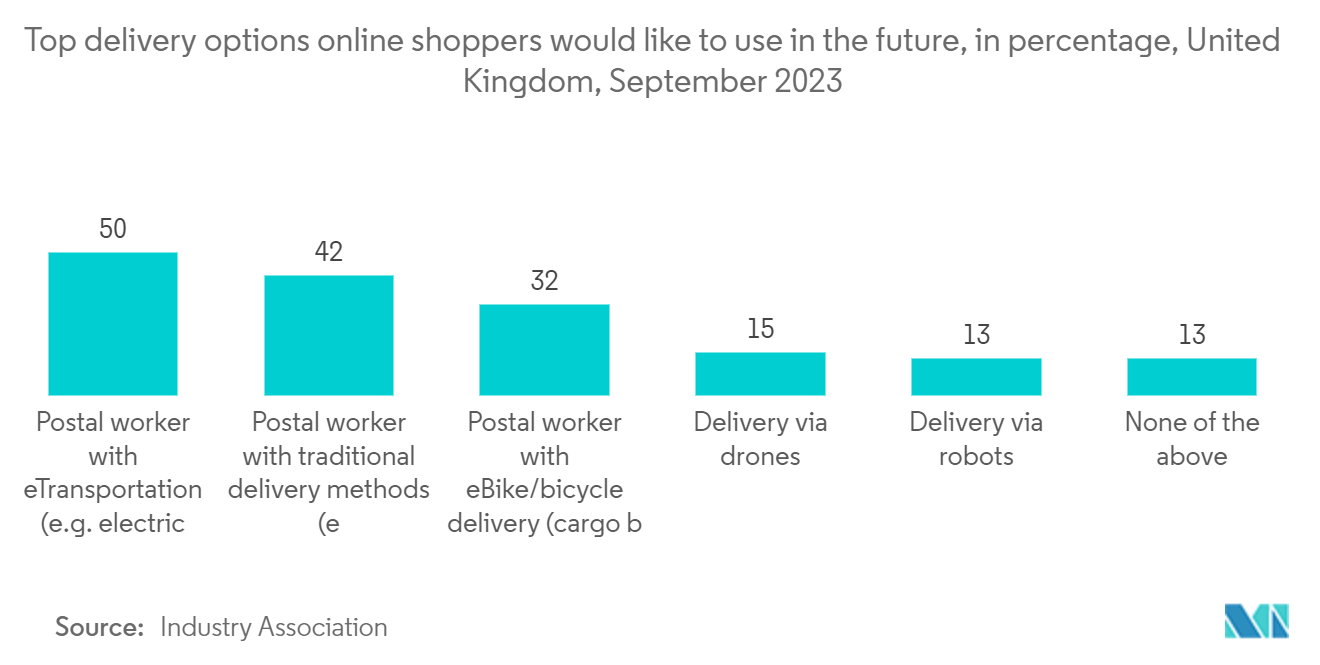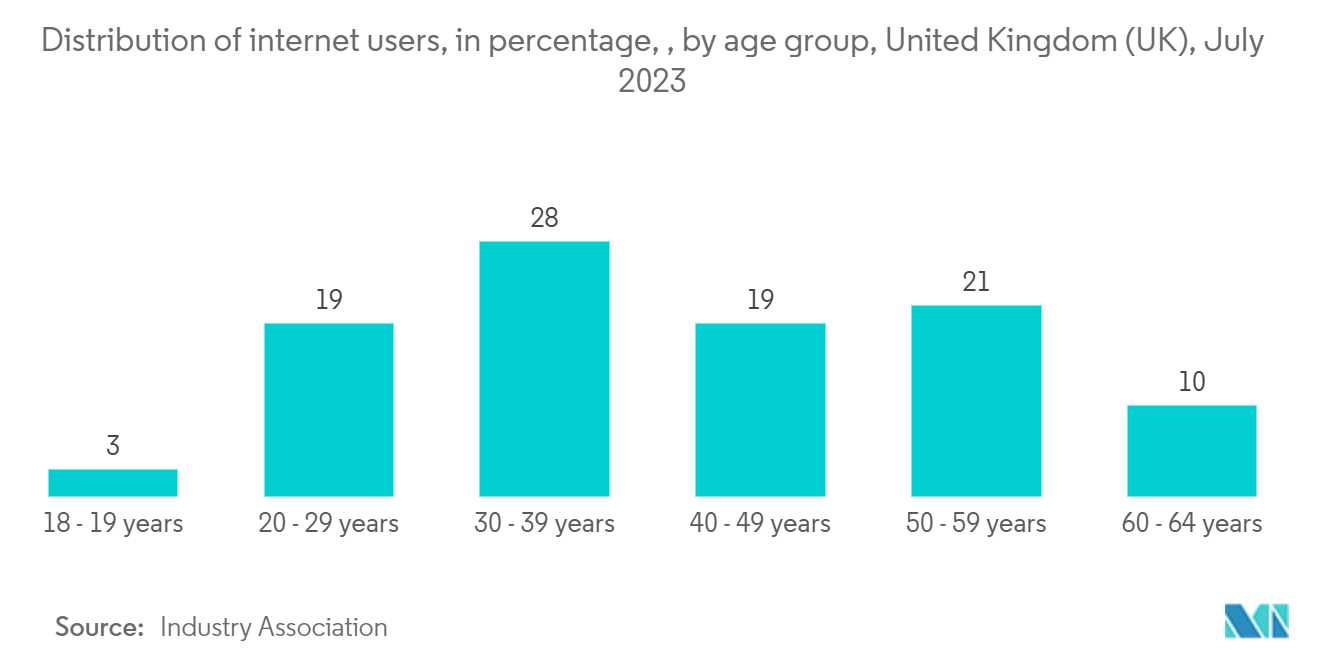Market Trends of United Kingdom E-commerce Logistics Industry
Immense Growth Projection for the Domestic Segment
One of the key drivers for the domestic segment in the UK e-commerce logistics market is the increasing popularity of online shopping. Amazon is the UK’s largest e-commerce platform, with 301 million monthly visits.
With more and more people turning to online platforms to make their purchases, the demand for efficient and reliable logistics services has skyrocketed. This has led to the growth of various e-commerce logistics companies specializing in domestic deliveries.
Clothing is the top-selling product for UK online shoppers, with 78% saying it’s their go-to. 56% of online payments in the United Kingdom use credit cards, and 92% of socially shopped products are bought over Instagram. Online shopping makes up 26.5 % of the total retail market in the United Kingdom.
According to an online shopper survey in the United Kingdom in 2023, free shipping was the most important delivery criterion for two out of every three respondents. Fast shipping was the second most important, followed by free return shipping. Carbon-neutral shipping was the least important, with only 13 % saying it was important.
Collaborative delivery models, such as crowdsourcing and peer-to-peer delivery, are emerging trends in the UK's e-commerce logistics market. These models leverage unused capacity in private vehicles to transport goods, providing cost-effective and flexible delivery options.
With the rise in e-commerce and the concentration of the population in urban areas, logistics providers are developing innovative solutions for urban deliveries. This includes using electric vehicles, cargo bikes, and micro-fulfillment centers located closer to customers to reduce congestion and emissions.

High Internet Penetration Driving the Market
The United Kingdom has one of the biggest online populations globally and in Europe. It had about 60 million internet users in 2023, 4th in Europe and 17th globally. The country is expected to have 63 million internet users by 2028. The vast majority of the United Kingdom population, around 98%, is online.
The United Kingdom is 6th in the world in terms of internet penetration rate. In addition, the proportion of households that have internet access in the UNITED KINGDOM is 95%. The most active internet users in the United Kingdom were between the ages of 30 and 39, making up nearly 30% of all internet users nationwide.
Men and women used the internet at similar rates, with only a 2% gap between them. According to a survey of internet users across the United Kingdom, the vast majority of people who use online services and platforms are full-time employees, with around 30% having a bachelor's degree or higher.
Smartphones outpaced all other internet-connected devices by 2023. In the United Kingdom alone, around 77 %of online time was spent on a smartphone. People in the United Kingdom spend an average of 3 hours and 40 minutes on the internet every day, including nearly 3 hours on a smartphone. The most active smartphone users were young adults aged 25 to 34.
With high internet penetration, more people in the United Kingdom have access to online shopping platforms. This has led to a surge in online shoppers, resulting in higher demand for e-commerce logistics services.

